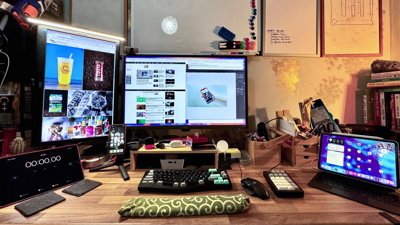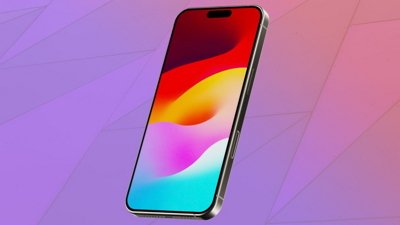While the assisted GPS in the iPhone currently allows users to view their own location through the integrated Maps application, the described addition would make it simple and easy to share that data with someone else. The location data could be quickly shared with a person who is currently connected with a phone call, or with someone who was recently sent a text message.
The system would also allow users to actively send their location to another person, or to allow a user to request the location data of the other person, which would then require approval for security purposes. The information would be valuable to friends who are trying to meet, but do not know the whereabouts of each other.
"During an ongoing call, the second user may be prompted (by the second device) to authorize release of her current location information to the requesting first user," the application reads. "Once authorization has been obtained (e.g., by the second user actuating a virtual or physical 'OK' button of the second device), the second device composes and sends a message to the first device that contains its current location information."
The application notes that the invention would not require any modifications to existing cell phone network infrastructure, as long as both handsets feature a device-to-device location awareness application running while the user is in the midst of a phone call.
The location sharing system could also have a stored list of "trusted users," who could access someone's current location by default. This would bypass the user approval necessary with traditional users.
Once permission is received, the phone would automatically display a map with a marker noting the current location of the other device. The map would be wide enough to also show the user's own location, and could provide the distance between the two, along with directions.
The application, entitled "Device-to-Device Location Awareness," was first filed on Aug. 4, 2008. It is credited to Michael M. Lee, Justin Gregg and Chad G. Seguin.
Remotely tracking an iPhone's location has been a feature of Apple's handset since the iPhone OS 3.0 software update. With a subscription to the MobileMe service, users can activate the "Find My iPhone" feature if the unit is lost or stolen. Apple also added a Remote Wipe service that allows users to permanently delete all media and data on the iPhone, restoring it to factory settings in the event that the handset is lost or stolen.
 Neil Hughes
Neil Hughes







-m.jpg)






 Malcolm Owen
Malcolm Owen
 Christine McKee
Christine McKee

 Amber Neely
Amber Neely













34 Comments
This is simply because Apple folks don't do good and diligent code review....
Yikes.
"Uh, yeah honey, I'm just at the uh . . . office still, working late. I'll be home later."
Click.
"Alright, so you want to tie me to the bed and the safety word is 'ice-cream'? Got it."
Yikes.
"Uh, yeah honey, I'm just at the uh . . . office still, working late. I'll be home later."
Click.
"Alright, so you want to tie me to the bed and the safety word is 'ice-cream'? Got it."
You beat me to it, I was going to say the same thing.
Yeah, I'm working late... er... in a west end bar!
I can do a lot of this already in my iPhone 3GS. If I go to Maps and tap on the blue dot that indicates my current location, and then on the little blue arrow that appears, a menu appears.
One of the options is 'share location' which then gives the option to send a SMS or MMS.
I know it's not the full functionality talked about above, but it's certainly well on the way to it.
You beat me to it, I was going to say the same thing.
Yeah, I'm working late... er... in a west end bar!
The system would also allow users to actively send their location to another person, or to allow a user to request the location data of the other person, which would then require approval for security purposes. The information would be valuable to friends who are trying to meet, but do not know the whereabouts of each other.
So if one of the parties refuses . . . we've got a somewhat uncomfortable situation under certain circumstances.